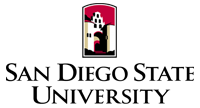| Home Comprehensive Reflection Standards Matrix Resume |
 |
STANDARDS PROCESSES
ARTIFACT EDTEC 544: Instructional Design Context and Project Description In EDTEC 544 Instructional Design, we were asked to respond to a request for proposal from a hypothetical company addressing an instructional problem or opportunity. We submitted an initiating memo identifying the opportunity and an initial analysis report describing how this can be addressed by an instructional product. We put together a design team and developed the systems specification for the project proposal. Our proposal was a web-based instructional product called Digital Photography for Novices aimed at beginning photographers who are ready to advance to the next level of digital photography. Our design team consisted of four members. The product consisted of four (4) instructional modules: Composing Photographs, Controlling the Lighting Environment, Controlling Objects In Focus and Sharing Photos Online. This artifact is about Module 4: Sharing Photos Online. How The Artifact Demonstrates The Standard The design process I used in developing this portion of the project was based on the ADDIE model. The initial analysis phase was covered by the systems specifications developed by the team earlier on. We have determined our learners, our overall goals, the overall knowledge and skills that needed to be taught, the level of content to be included and the resources that will be required. In designing my part, I first identified two general learning goals based on the systems specifications. These goals were further refined to two specific learning outcomes. I organized the modules into two lessons, creating an outline of each lesson which included measurable objectives, relevant topics, demonstrations, exercises, review and assignments. During development, I created a simple storyboard representing the layout of my module for review by my design team. After incorporating changes based on their comments, I developed a rapid prototype for testing. Three subjects were chosen to evaluate the prototype site using the THINK ALOUD method. Instructions were given orally, via email and on the prototype itself. During this whole process, I maintained a design notebook via a blog to record the evolution of my design process including modifications such as navigation links, images, audio, content revisions, etc. For the overall project, we monitored our progress by keeping a project plan detailing our deliverables and due dates. Challenges and Opportunities Although each module was developed separately by different individuals, the systems specifications created as a result of the initial analysis phase were invaluable in structuring the design and development process for the rest of the project. It gave the team a framework to work from and encouraged a collaborative effort. Following the same design process made it possible to provide community solutions and feedback. What I Learned The ADDIE model may be a very generic form of instructional design but its flexibility and systematic approach can be applied to any project. The step-by-step process provides an easy-to-use roadmap that leads to measurable results.
|
 |
| © 2010 www.raquelnilson.com - All Rights Reserved. Designed by Executive Assistance International a subsidiary of Nilson Research Corporation |